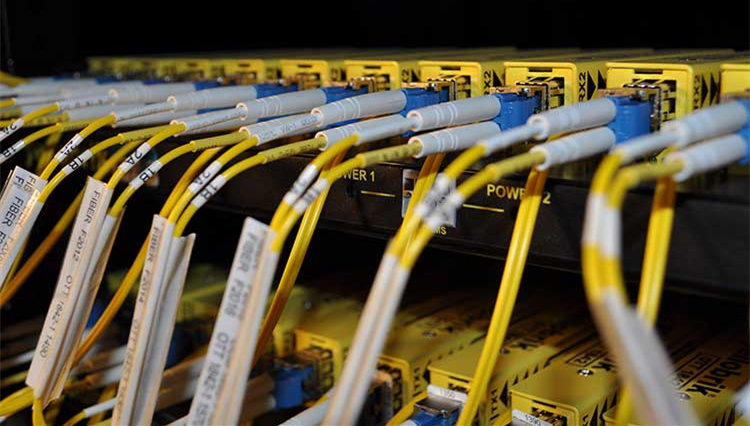Three Ways Fiber Optic Transceivers Promote Data Center
Data center has now become one of the most critical and dynamic operations in any business. With all the data processing and transmission, it is only critical that every design aspect and component of your data center is properly optimized, including its fiber optic transceiver technology. The transceiver and other optical components need to meet varied bandwidth requirement for storage, switch, and server applications. Now let’s see how the optical transceivers will promote data centers in the future.

Optical transceivers are becoming smaller, but more powerful, which makes them an important piece in server technology. In fact, even though a transceiver is physically small, it can handle a network expansion or an entire install. This shrinking of transceivers allows for the improvement of servers. This reduces the overall footprint of servers and networks, which makes data centers smaller and streamlined. Optical transceivers also require lower power consumption, which means you get lower costs both in terms of design and electricity expenses.
A growing number of enterprises are transiting to private and hybrid clouds, which drives the bandwidth and connectivity requirements. As high-speed data carrier, transceivers facilitate high speed data transfers. Enterprises that want to achieve faster transmission have to choose transceivers with high quality. There are many types of transceivers available in the market, such as SFP, SFP+, XFP, QSFP, etc. Each type of transceiver is designed to support different data rate. Capable of transmitting data at 10Gbit/s, 40Gbit/s, 100Gbit/s or even 120 Gbit/s, transceivers can realize the high-speed data transfer, ensuring bandwidth upgrades in enterprise data centers. Taking 10GBASE SFP+ modules for example, these hot-pluggable transceivers (eg. HP 455883-B21) deployed for 10 Gigabit Ethernet (GbE) applications, though designed physically small, support maximum data rate of 10.3125Gbps.
Optical components are always being improved, which can only mean good things for data center managers. According to recent numbers, 2016 and beyond will be huge for the data center market and optical components as more companies require efficiency in their networks. Data centers make up 65% of the overall 10G/40G/100G optical transceiver market. Shipment of 10G transceivers continue to grow, but still has plenty of space to develop, especially as industry experts expect the optical transceiver market is expected to reach $2.1 billion by 2019.
Consumers and technology experts can expect optical transceivers to improve as data centers grow and the cloud industry expands. Manufacturers have introduced transceivers that can transmit data at 40Gbps and 100Gbps, while some startups are investing millions in developing technology that can achieve higher speeds. These and other improvements can only mean good things for businesses and consumers.
It’s necessary to mention that there are more than three ways that transceivers promote data centers. Transceivers, a key component designed relative to the promotion of big data in data centers, are instrumental in managing big data. As a professional transceiver supplier, FS.COM provides a wide variety of fiber optic transceivers supporting different data rates, like SFP+ (eg. SFP-10G-LR), XFP (eg. XFP10GLR-192SR-L), QSFP (eg. QSFP-40G-CSR4). If you have any requirements, please contact us via sales@fs.com.